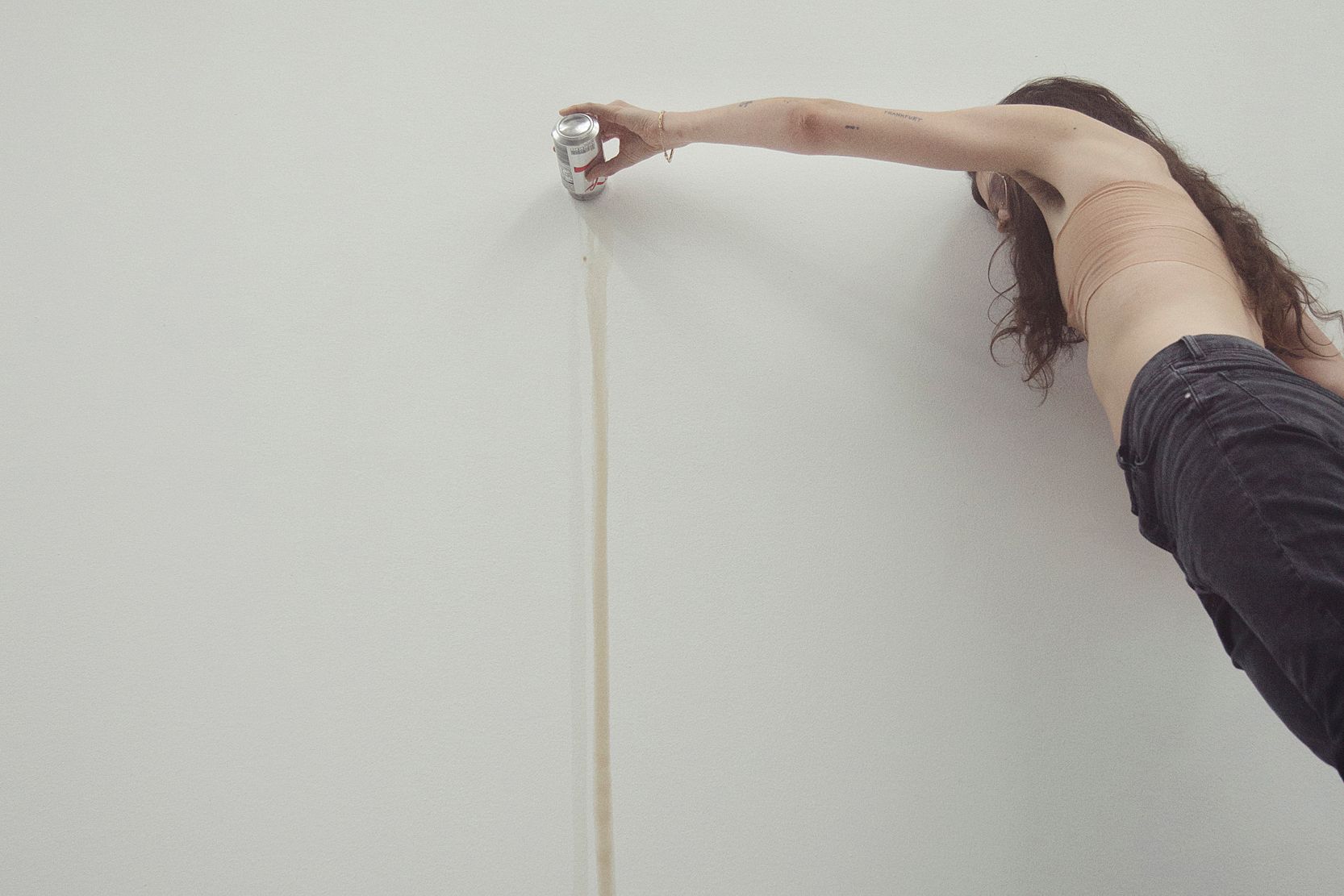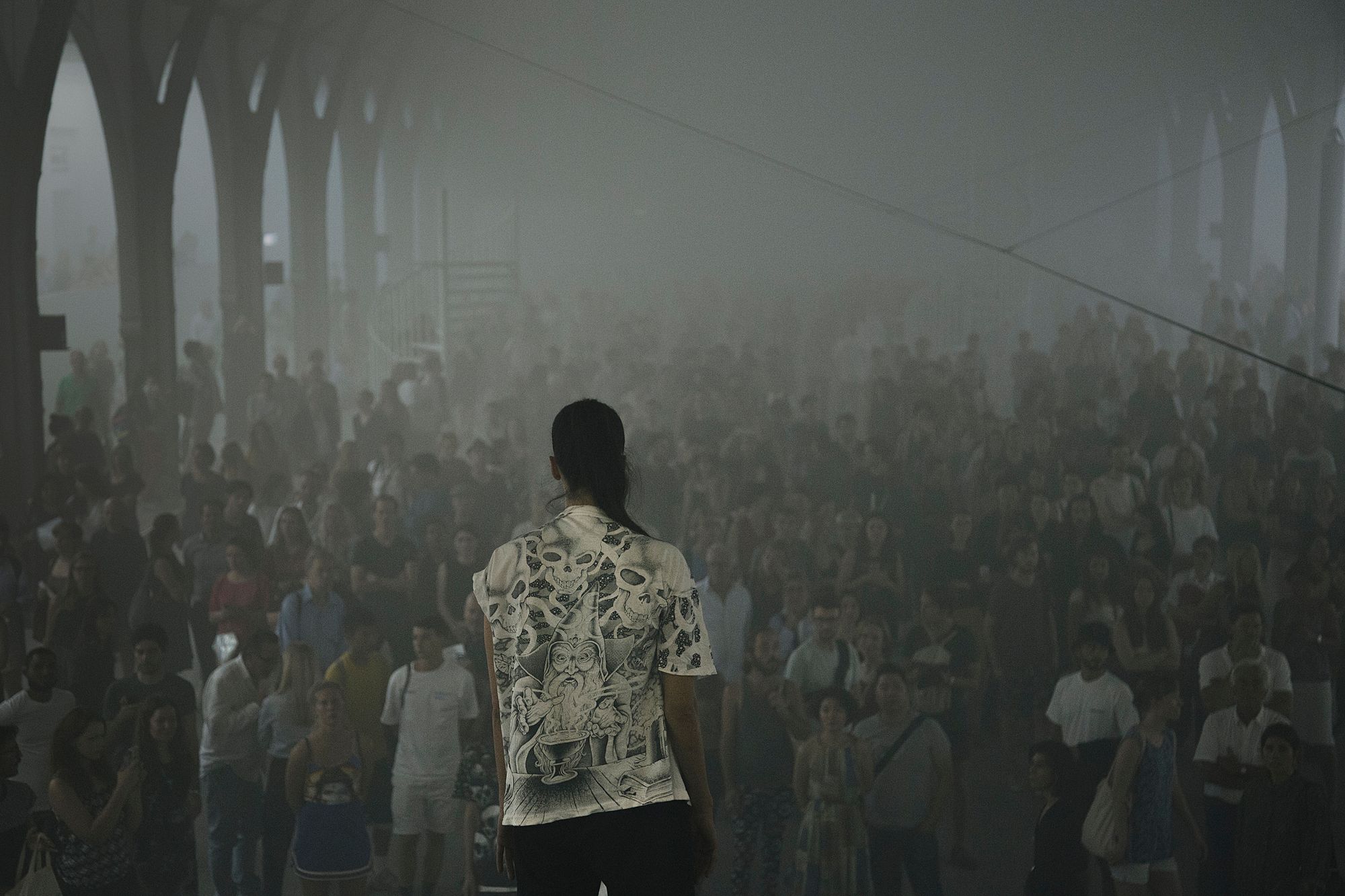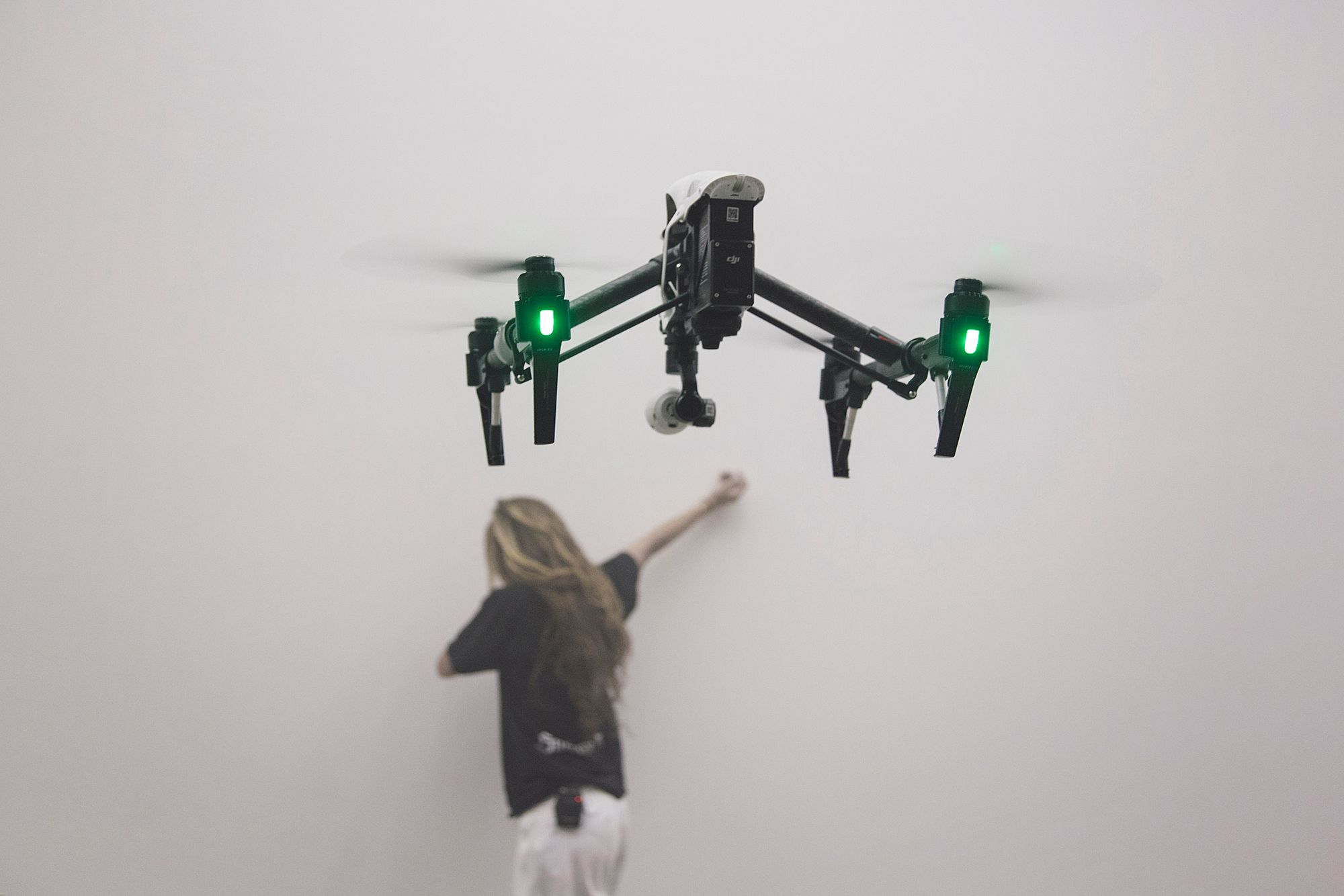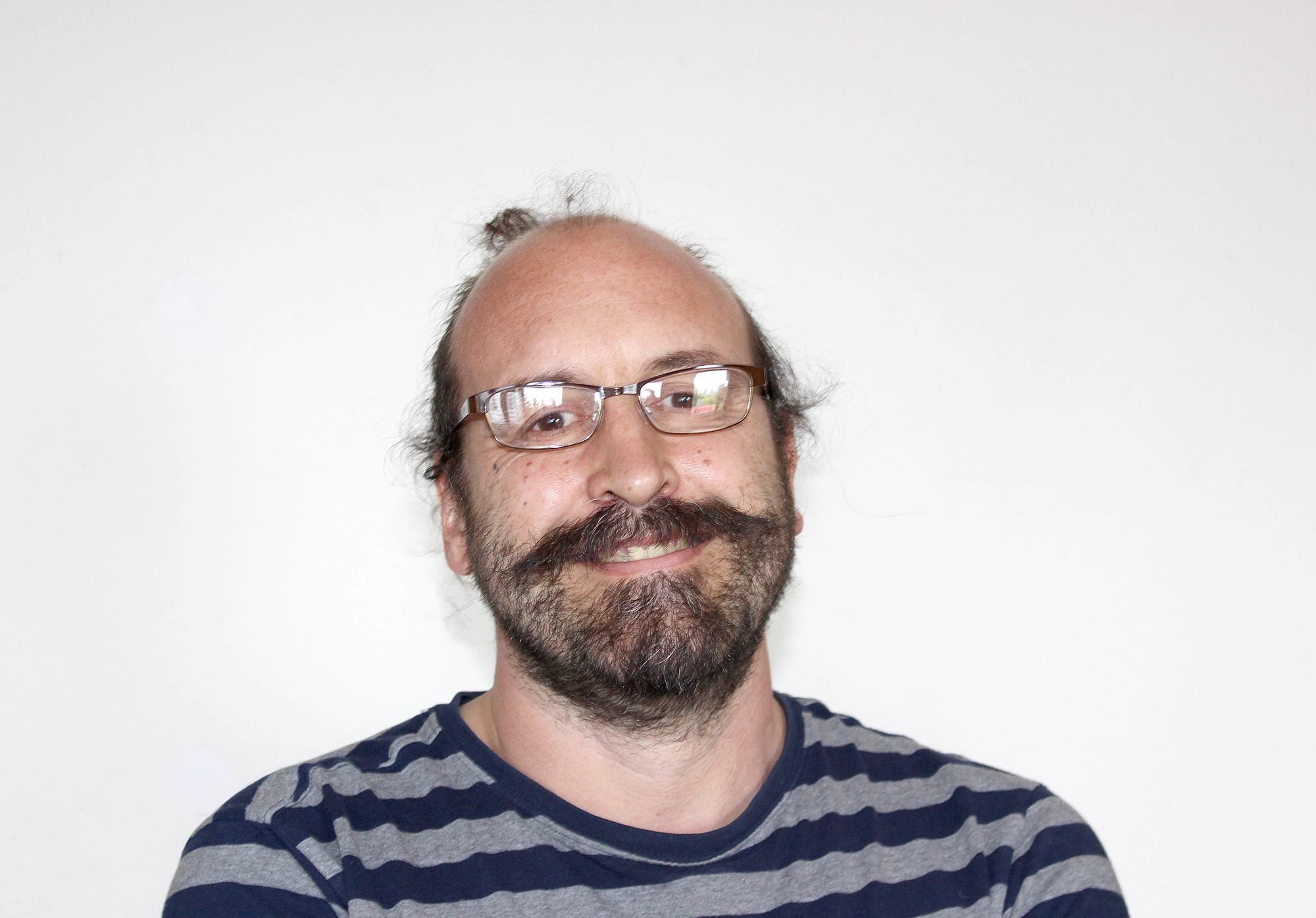Cola spume up the walls: A review of Anne Imhof’s ‘Angst II’
Matthew Crookes on one of this year’s must-sees for the art jetset: A Wagnerian opera of mundane onanism.
Matthew Crookes on one of this year’s must-sees for the art jet-setter: A Wagnerian opera of mundane onanism.
Among the outstanding events in international art this year was Anne Imhof’s Angst series: this increasingly globally important artist (representing Germany at next year’s Venice Biennale) created three sprawling performance works across three art centres on two continents over several months. They were distinguished by their scale and ambition, but the tone which Imhof brings to her productions is a good example of a particular response in current European – and international – art. It is a retreat into the self in the face of the anomie and growing instability of a world shaped by social media and other pressures. In Angst II, as in other works from the series, Imhof chose subjects which ostensibly contrasted to the “exhibition as opera” tag: body consciousness and languor. The exhibition offered listless images in a bombastic frame.
Angst II took place during Berlin Art Week at the Hamburger Bahnhof, Museum für Gegenwart – a major exhibition venue occupying a former railway station – in September, after Basel’s first act in June and July, and before the Montreal finale in October.
Angst II inverts the traditional dynamics of theatre, as the performers are largely still, and scattered, while the audience runs around, taking pictures and videos...
It offered the everyday preoccupations of anxious, bored teenagers in a choreographed, amplified, ritualised way: cans of soda pop were spilled; cigarettes were smoked; stomachs and even hands were shaved with liberal quantities of foam; selfies were taken; and marks scrawled onto the wall.
An epic production, the Angst series harks back to Wagnerian scale pieces which ran for days at a time. Angst II took form as a series of ten performances across ten evenings – and each performance lasted four hours. The event was free of charge and each evening large crowds waited to get in.
Angst II inverts the traditional dynamics of theatre, as the performers are largely still, and scattered, while the audience runs around, taking pictures and videos, hurrying between the centres of action as they overlap, emerging almost undetected. It’s a reminder of contemporary philosopher Jacques Ranciere’s emancipated spectator; that is, his idea of a theatre removed from the formal stage and reincorporated into everyday life.
In a recent interview about Angst II, Imhof said:
“It’s more of an image than a situation. These days my works pose some kind of seductive, managed transgression. They are mainly about identity and constructed out of a very subjective perspective…. leaving enough room for those who see my work to be immersed and leave enough room for them to create their own narrative.”
The work is certainly non-linear. Here a player wails into a microphone, to a relentless rock riff, there another performer lies motionless, seemingly passed out, on top of one of the spiral staircases that are part of the set along the main part of the exhibition space, but which lead nowhere.
Throughout the four hours you notice groups of people gathering around new, nascent tableaux of performers as they unfold. Mechanical drones come and go. Imhof used the performers to create divisions within each tableaux. Periodically a performer will abruptly get up and march to another location to join a new activity. At other times their transition from one place to another is stealthier.
The performers’ expressions are blank. The actions are discursive. Their function is unclear.
To choreograph two dozen or so convincingly downbeat performances is no mean feat. The piece includes actors, models, dancers and friends of the artist. Model Eliza Douglas, Imhof’s partner is the main protagonist. Tall and elegant, she nonetheless largely succeeds as a bespectacled, geeky, androgynous figure. The performers’ expressions are blank. The actions are discursive. Their function is unclear. A tightrope walker ventures out along the cable strung out at the room’s entrance.
The overall imagery and ambience derive partly from contemporary dance, partly from performance art and partly from the club scene. The ultimate ‘gesamtkunstwerk’ is another description for Angst II, which is to say, an all-embracing, all-encompassing endeavour. When tackling a gesamtwerk, it is best to describe it in terms of the sensations it evokes. This work lives up to this description, as an appeal to the senses. The hauntingly persistent score drives right through you at times, seems to lull you at others, while holding your attention throughout. The huge stacked speakers at the entrance of the Hamburger Bahnhof – which are three or four metres high – provide enough wattage to fill the entire space, placing you inside the work.
You begin to notice things about people’s behaviour in a crowd, about who stays close to the action, about who is prepared to venture deeper and disappear into that impenetrable fog and about your own curiosity and boldness.
The smell of dry ice – evocative of heady hedonistic nightclubs, discos, parties – almost completely fills the space. Performers and audience together walk through an opaque fog, making it difficult to tell one apart from the other. Occasionally a black-clad attendant will ask a member of the crowd to perform some small gesture. One effect of this dissipation is that your attentions are focused not simply on the action but on your fellow spectators. You begin to notice things about people’s behaviour in a crowd, about who stays close to the action, about who is prepared to venture deeper and disappear into that impenetrable fog and about your own curiosity and boldness.
The audience was as much properties of the production as the drones, the live animals (a donkey and a falcon appeared in some of the shows) and the cans of diet cola (which the performers would noisily open and pour down the walls).
Body consciousness, rockstar aspirations and languor. A young woman, standing on the back of a young man, produces her smartphone and videos the audience, highlighting another play on the relationship between the viewers and the viewed.
The production’s own official photographer is dressed much like the performers, so much so that she almost segues into the production herself, except that her movements are too quick and reflexive to truly be a part of their world. Other cast members are also recording, or appearing to do so, and we must suppose the drones are too. We can only speculate where those images will appear, if they do in fact exist. Small gestures within gestures, done with a studied casualness.
Just as you start to doubt whether you can sustain yourself through the four hours, your own curiosity and the near religious effect of the ritual, the sonorous bass, the guitar licks, the chanting, the space, will see you through. In saying that, there were far fewer spectators at the end of the performance, at midnight, than at the start.
Imhof’s achievement is not simply to have created a visual performance language from gestures of adolescent longueur and listlessness, but – through enveloping the audience over several hours – to have made these mundane, onanistic preoccupations into something absorbing and emotionally moving.
Angst II was at
Hamburger Bahnhof, Museum für Gegenwart – Berlin
14 to 25 September 2016



